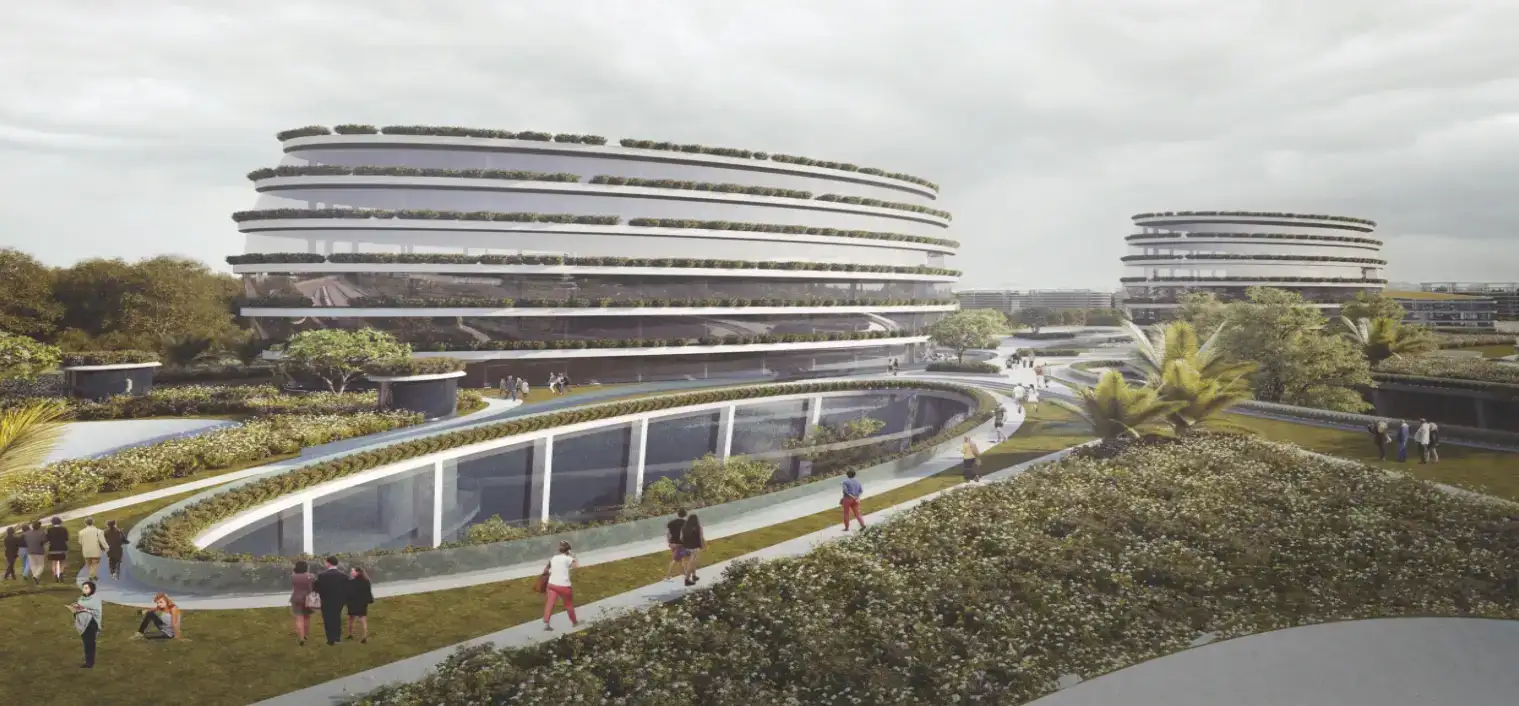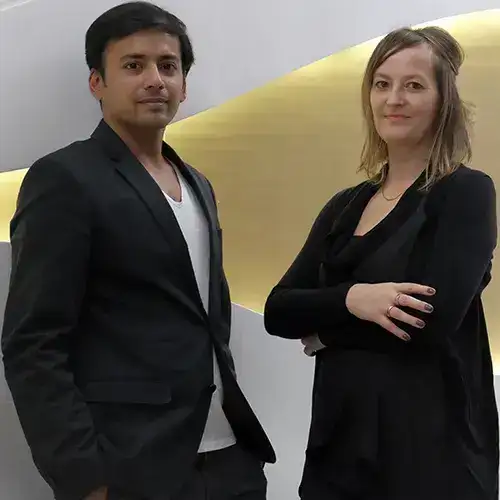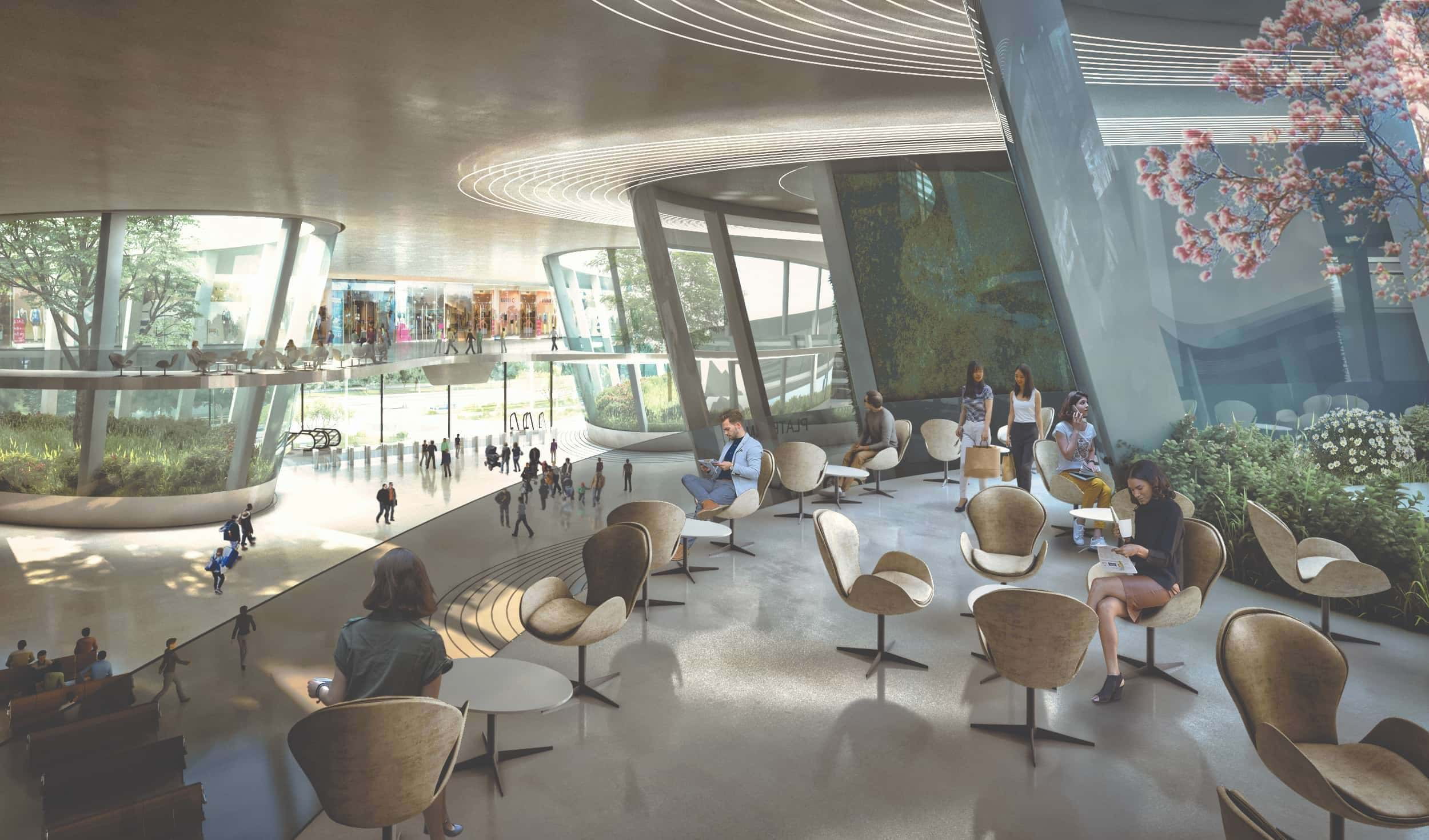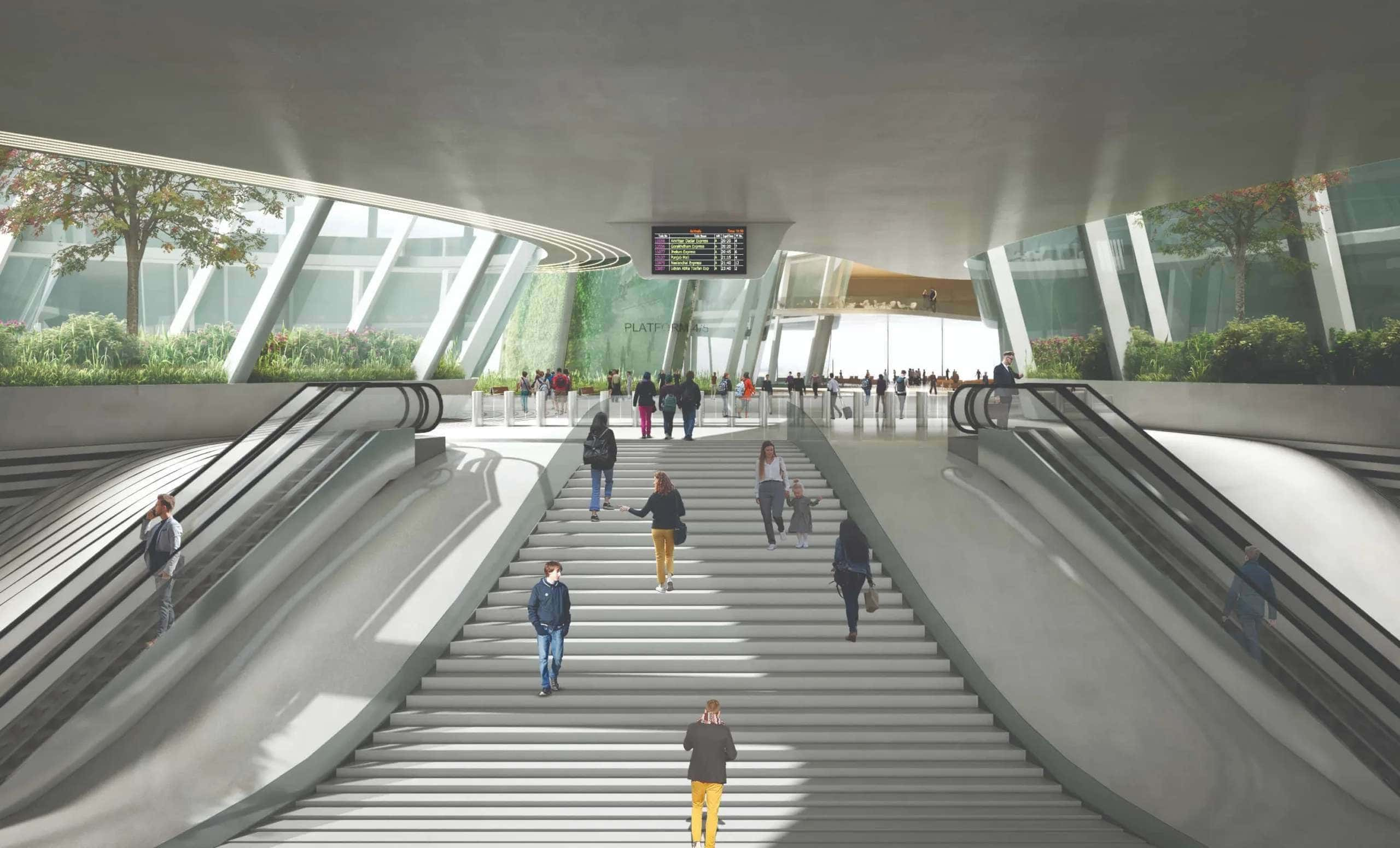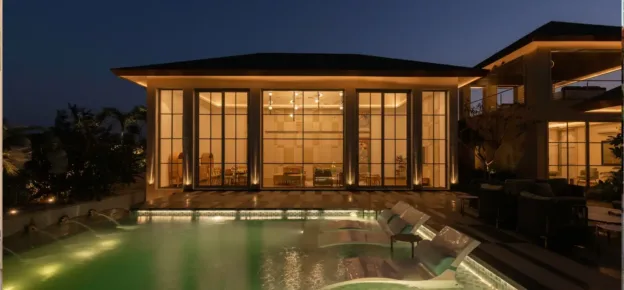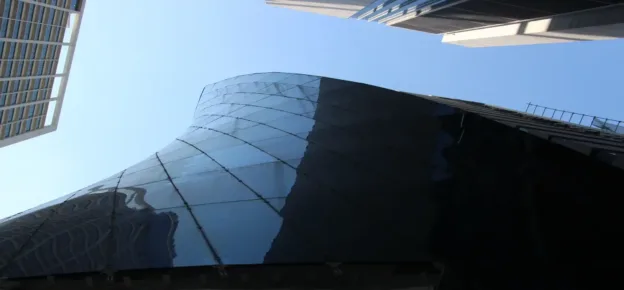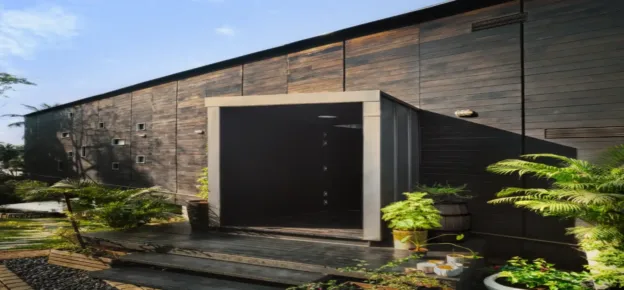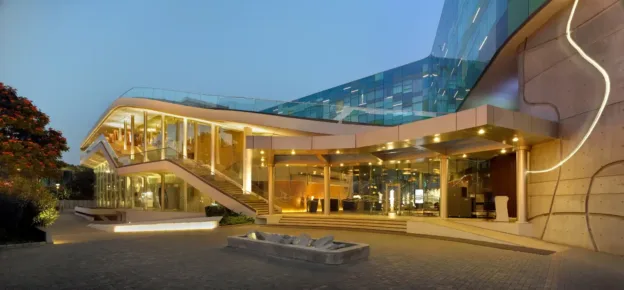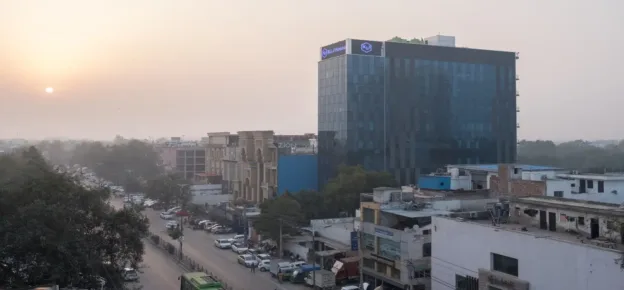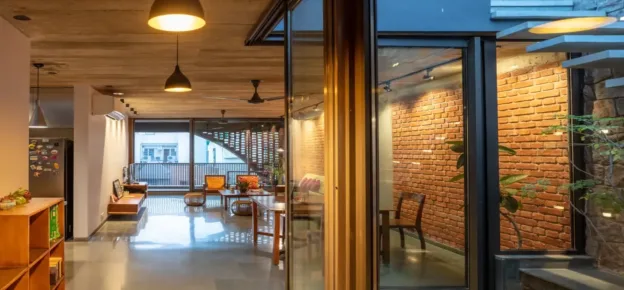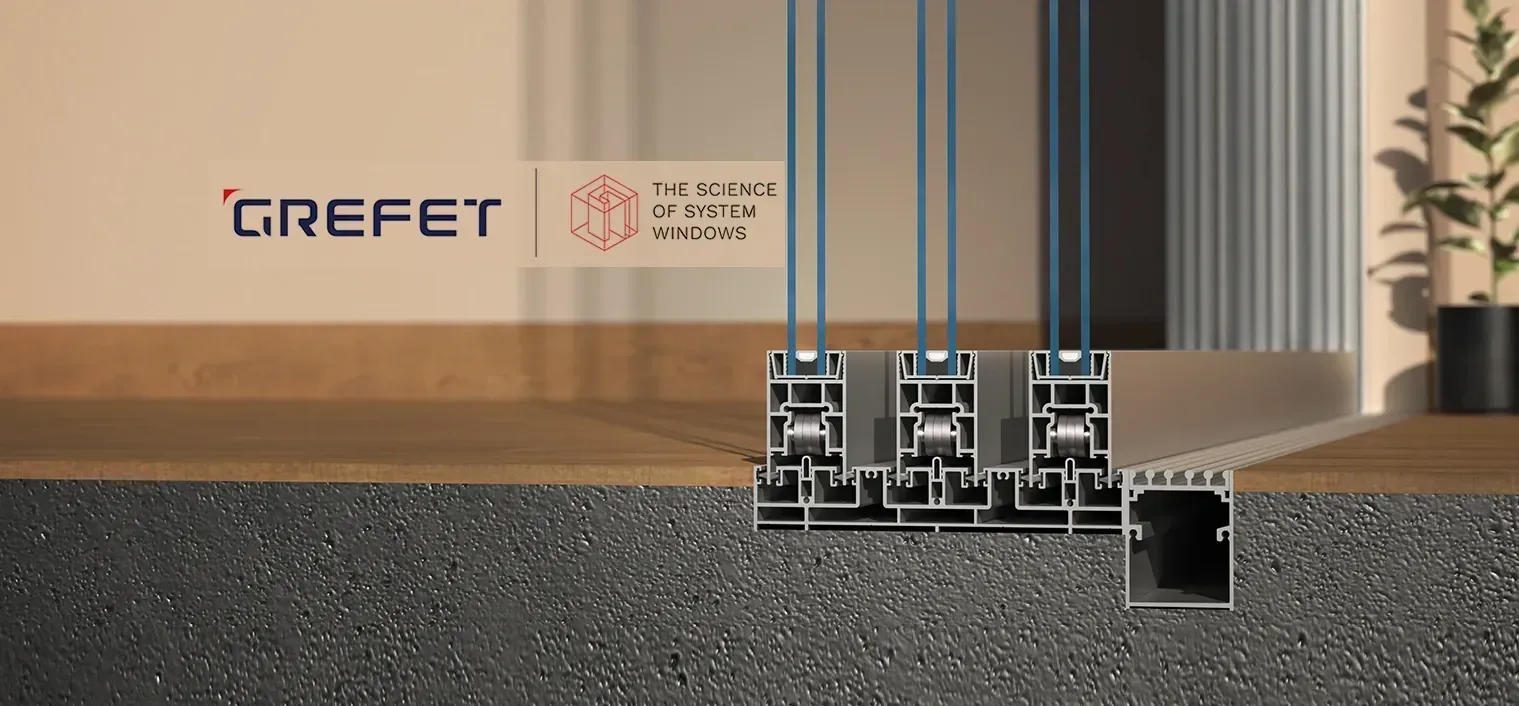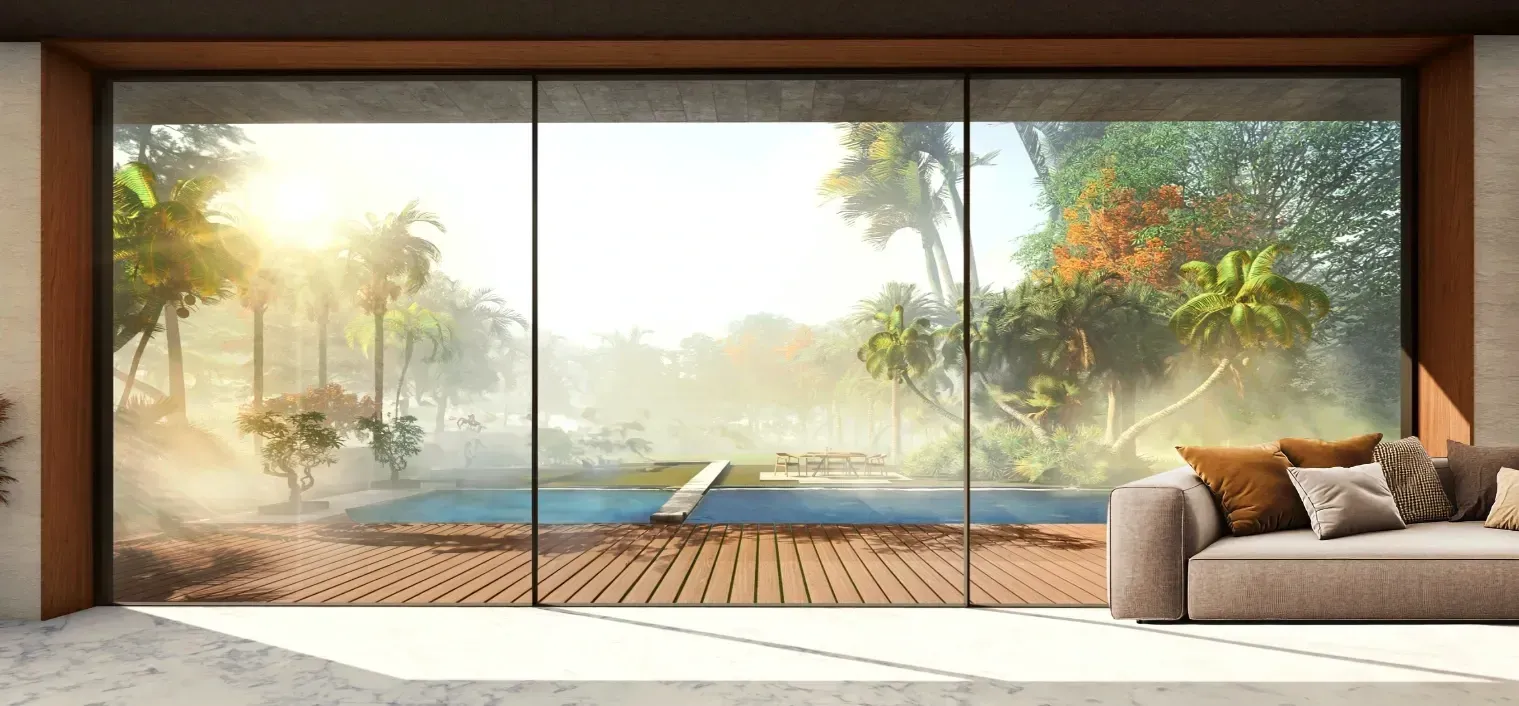Background And Design Philosophy
Baiyappanahalli train station and masterplan have been designed as a vibrant and contemporary piece of architecture, keeping in spirit with the city of Bengaluru. Better known as the ‘Garden City of India’, Bengaluru’s essence lies in its greenery. However, this green cover is fast depleting owing to the rapid urbanisation of the city. The project aims to instigate the revival of the Garden City of India by making this the central design philosophy and creating an icon that symbolises what was once the identity of the city.
The station has been envisaged as a green landscape floating above the train platforms. The terrace of the station is landscaped, also acting as a breakout space for visitors and users.
This “urban green roof” becomes a landmark building with a strong urban presence.
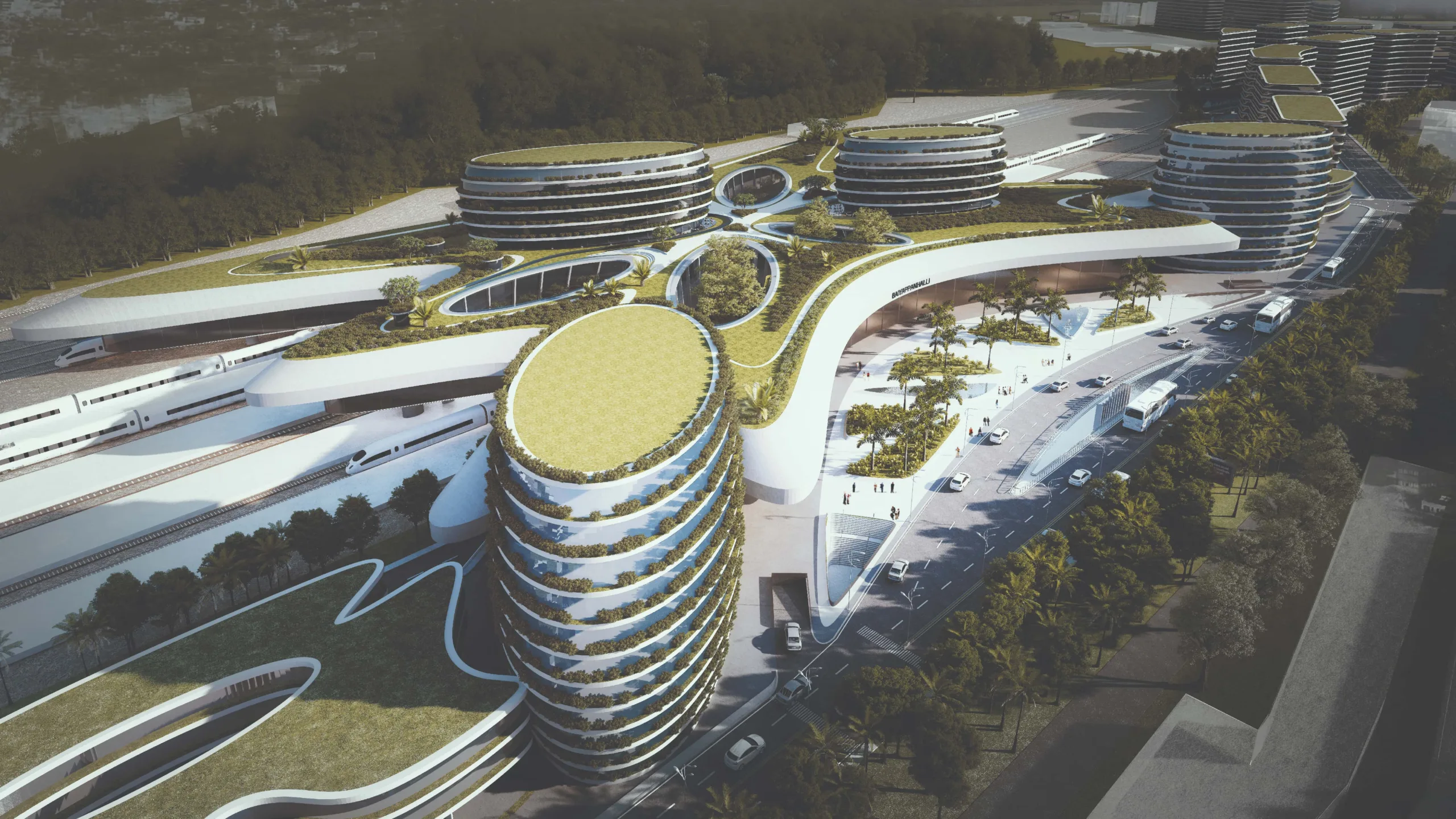
Green Corridors – Breathing Lungs Of The City
At the masterplan level, the garden city concept has been implemented. A green buffer has been provided between the site boundary and the city, and between the built zone and the train tracks. These green belts are proposed for pedestrian-friendly movement along with bicycle tracks to ensure no overlap with vehicular traffic.
It was critical to ensure the grafting of the proposed streets with the existing streets of the city. An 18-metre-wide road is proposed as the main artery of movement within the site that does not interfere with city traffic.
Skyline And Station Complex
The skyline responds to the station building and dips down to create a visual cue, marking the directionality of the station.
The station building itself sits partially above the tracks, along with two elliptical office buildings nested above it, exploiting the FSI of the air rights. Next to the station is a bus terminal and, on the other side, a shopping mall, creating a balance of movement and activity.

Conflict-Free Movement Of People And Traffic
In plan, the building morphs from a straight line to three defined zones at the entrance, creating segregated arrival and departure entrances, as well as access from the bus terminal and from offices/shopping. These spaces are delineated by the curve that creates three seamlessly defined yet connected zones.
A multi-modal transport hub ensures ease of connectivity with the network. A bus depot is located adjacent to the station building with a segregated approach for buses. An underground subway connection to the metro is proposed, with an alternative overground shuttle service to connect the station building with the metro station.
Visual Porosity
The station building design creates visual porosity and abundant light conditions, ensuring maximum use of daylight and promoting wind flow in the platform area. The open green courtyards provide natural ventilation and enjoyable green gardens.
Green Courtyards And Concourse
When passengers enter the station, the internal green garden welcomes them, aligning with the Garden City ideology. The concourse plaza is fully glazed, offering views for easy circulation, wayfinding, and maximum natural lighting. At the same time, the upper concourse is introverted, with surrounding shops, restaurants, and lounges opening to the circulation areas. The courtyards become the main focal point, with escalators and lifts nested within them, creating an integrated form-and-function relationship.
Urban Landscape Terrace
A gym, spa, and retail spaces help passengers make use of the long layovers and waiting periods, or they can simply sit in one of the landscaped gardens or courtyards. The station administration is split into two parts; one on the concourse level plus another, while the other part is in the tower adjacent to the station, connected by an indoor bridge. The roof landscape is segregated into different programmatic zones.
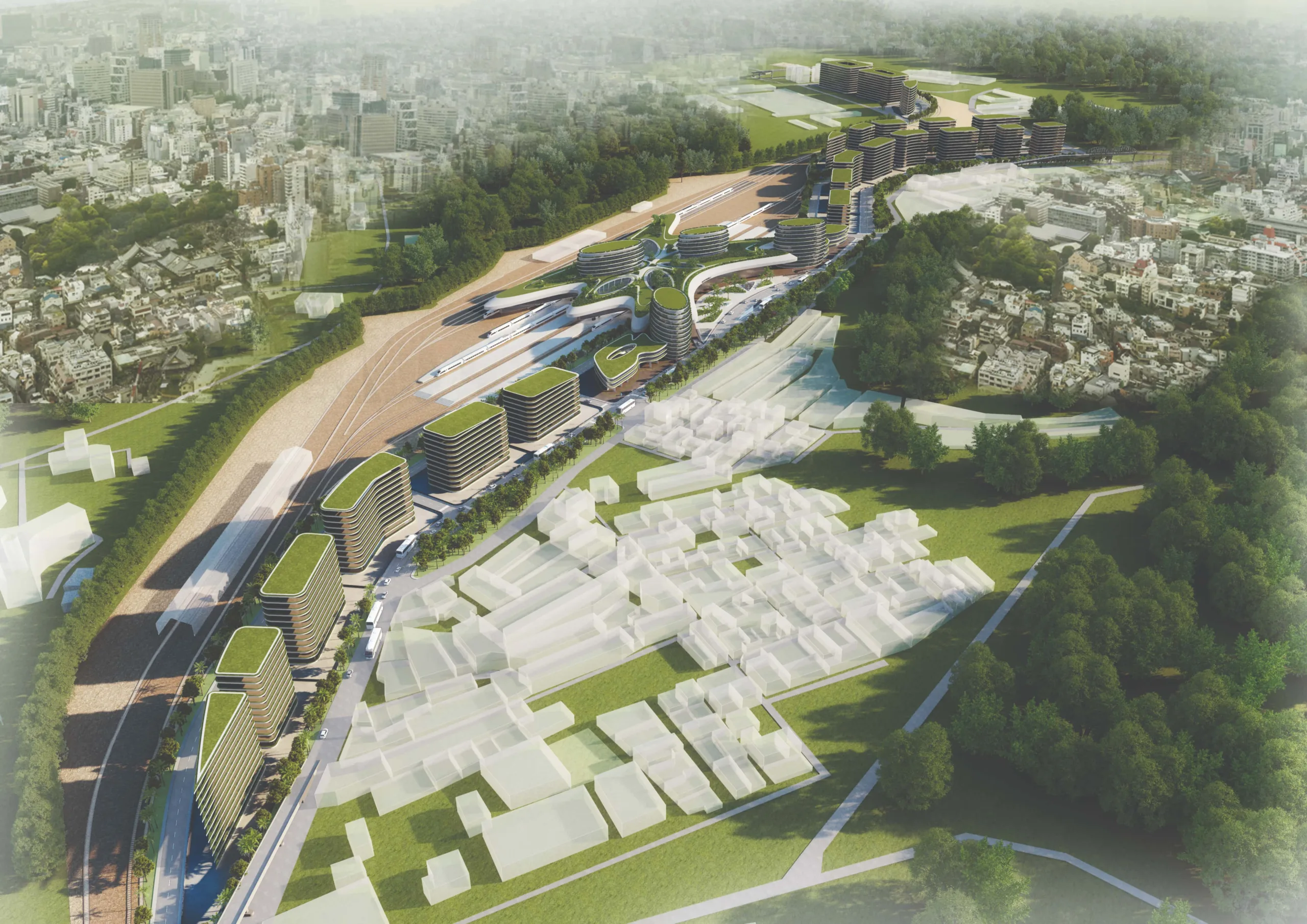
Landscape
Green corridors in the design create a sense of green living while modulating the boundary condition, separating pedestrian and bicycle movement from vehicles. The station building incorporates a green roof and courtyards, with foliage visible from the entrance, concourse, and platform levels.
A combination of sprinklers and drip irrigation is used to avoid excessive watering, with treated water from the STP used for irrigation.
Sustainability
Designed as a sustainable building, natural ventilation, abundant light, green spaces, active slabs, and renewable energy are integrated to create a building geared towards the future.

An optimum ratio of opaque to solid surfaces provides sufficient daylight in the station while avoiding excessive heat absorption. The courtyard typology allows natural light deep inside the concourse and upper concourse and promotes air movement through the building.
The platform level is fully shaded below the concourse, with green walls and hanging planters. Skylights are designed to allow natural light onto the platforms, complemented by green creepers.
Solar photovoltaic panels and solar hot water systems are proposed for the roofs of neighbouring station maintenance buildings. Separate collection points for organic waste, paper, plastic, and metal waste are planned.
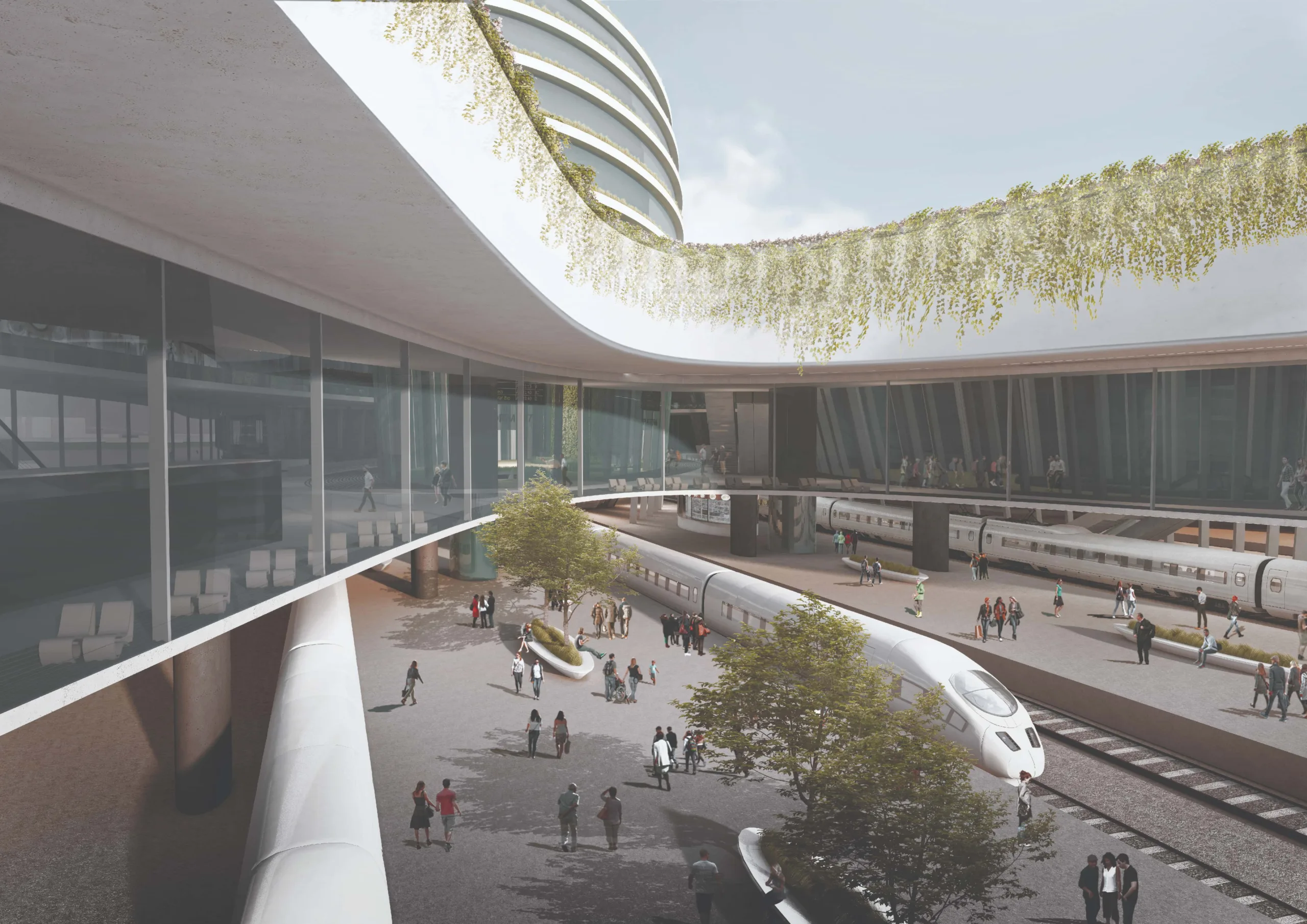
Building Systems And Energy Saving
Energy saving is achieved through maximising daylight, using LED light fittings, applying passive cooling in non-air-conditioned areas, efficient air-conditioning in air-conditioned zones, heat recovery, and a Building Management System to optimise air-conditioning and lighting. Solar photovoltaic panels and solar hot water systems are installed on neighbouring maintenance buildings and unused areas between the tracks. In selected areas, floor tiles that generate electricity from foot movement will be installed.
Quick Facts:
|
